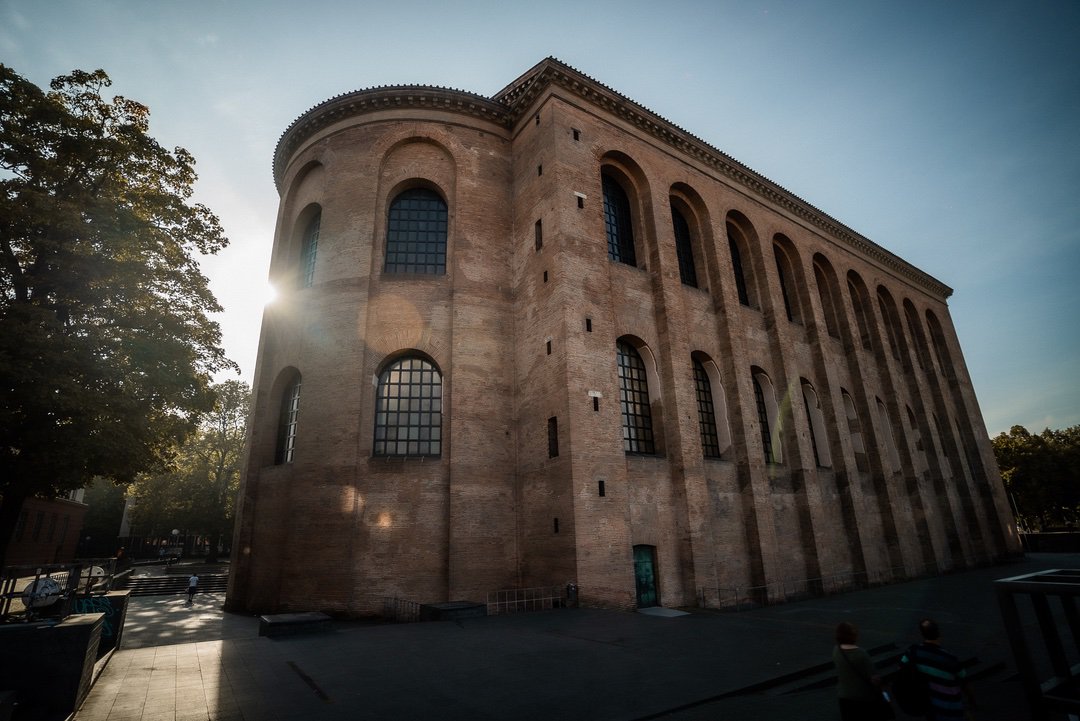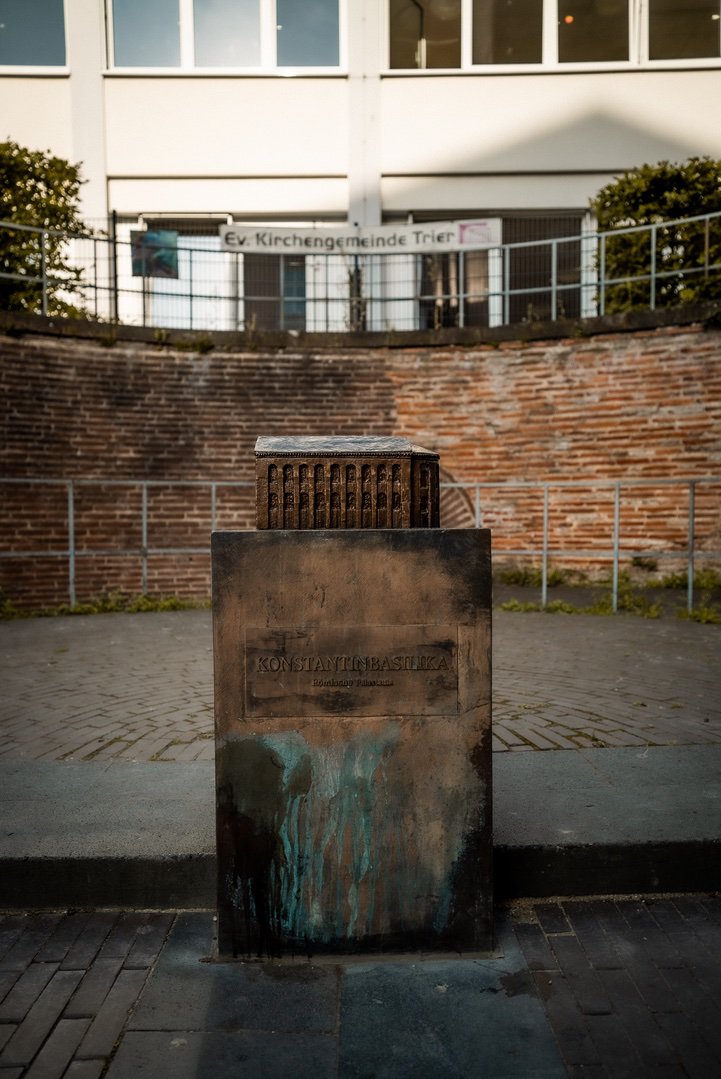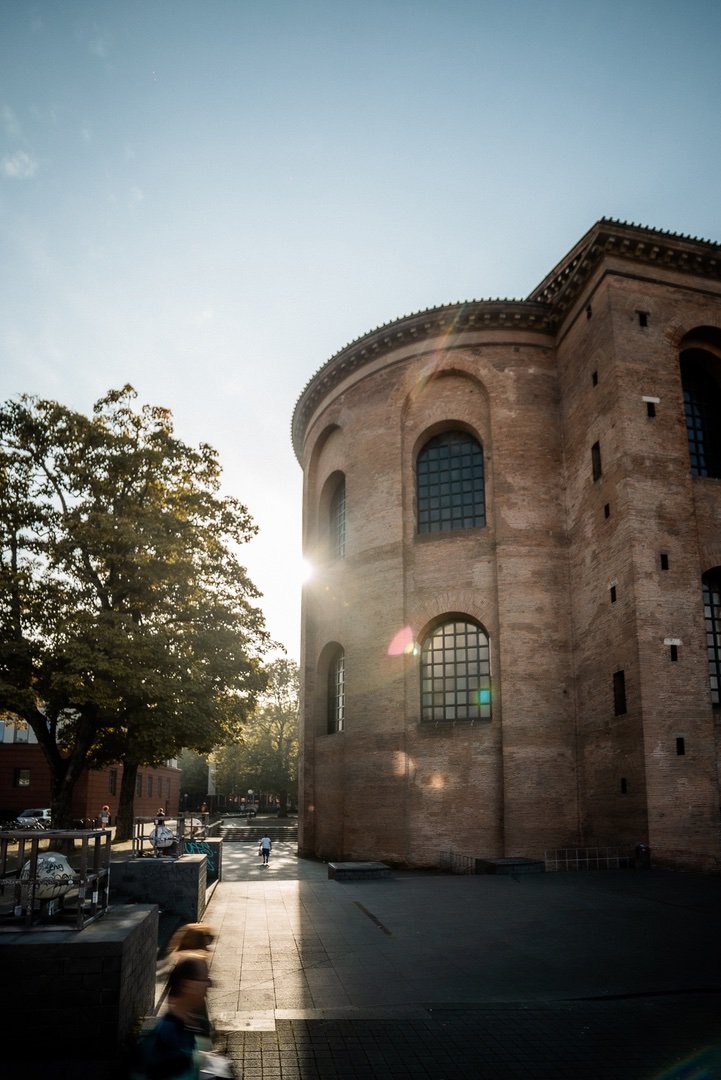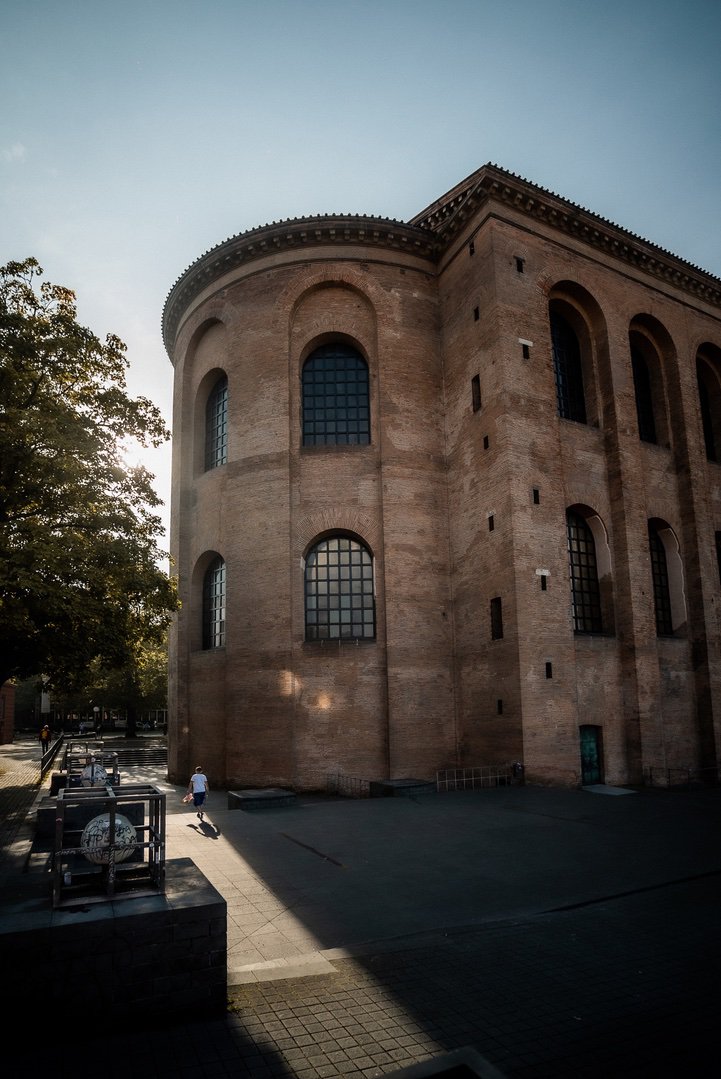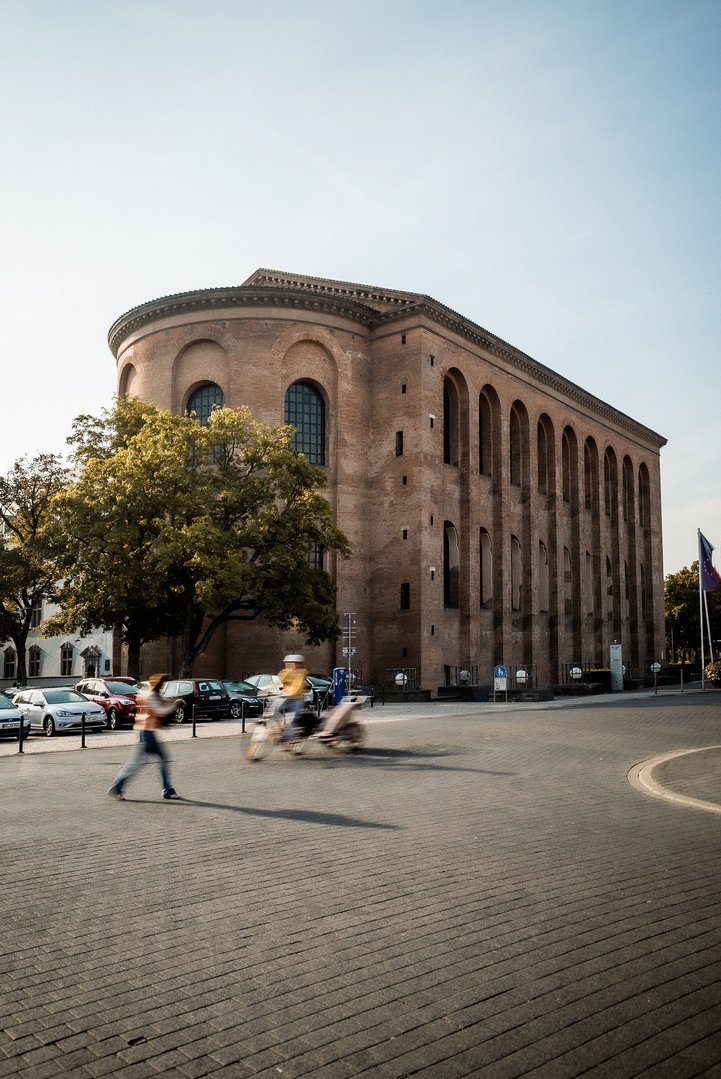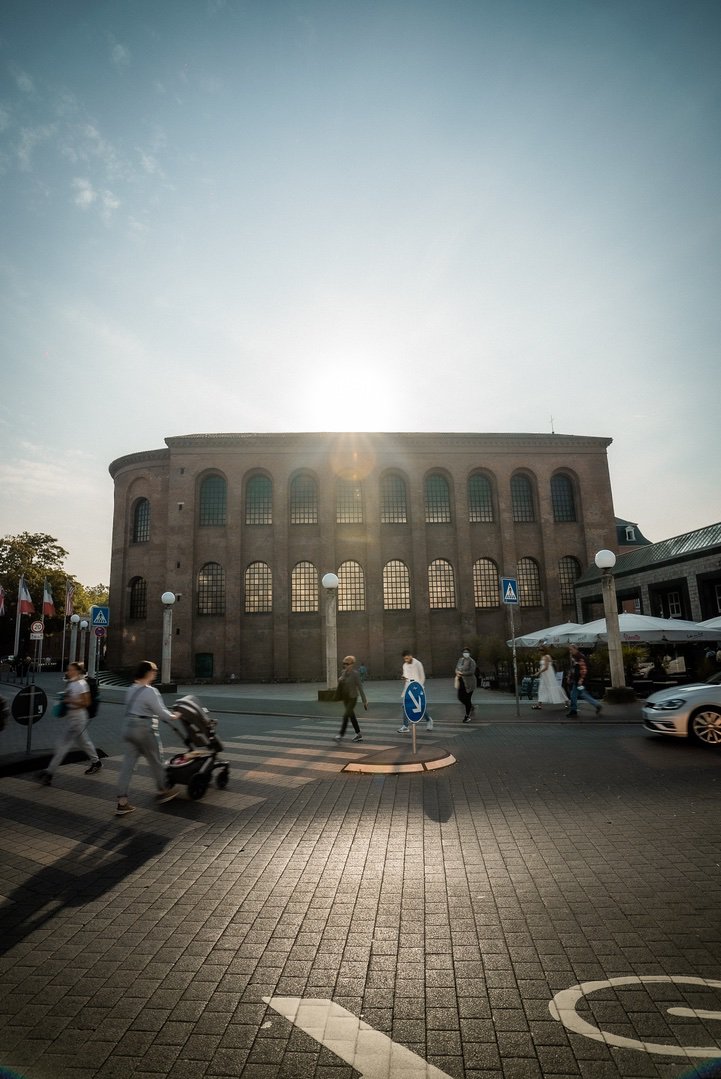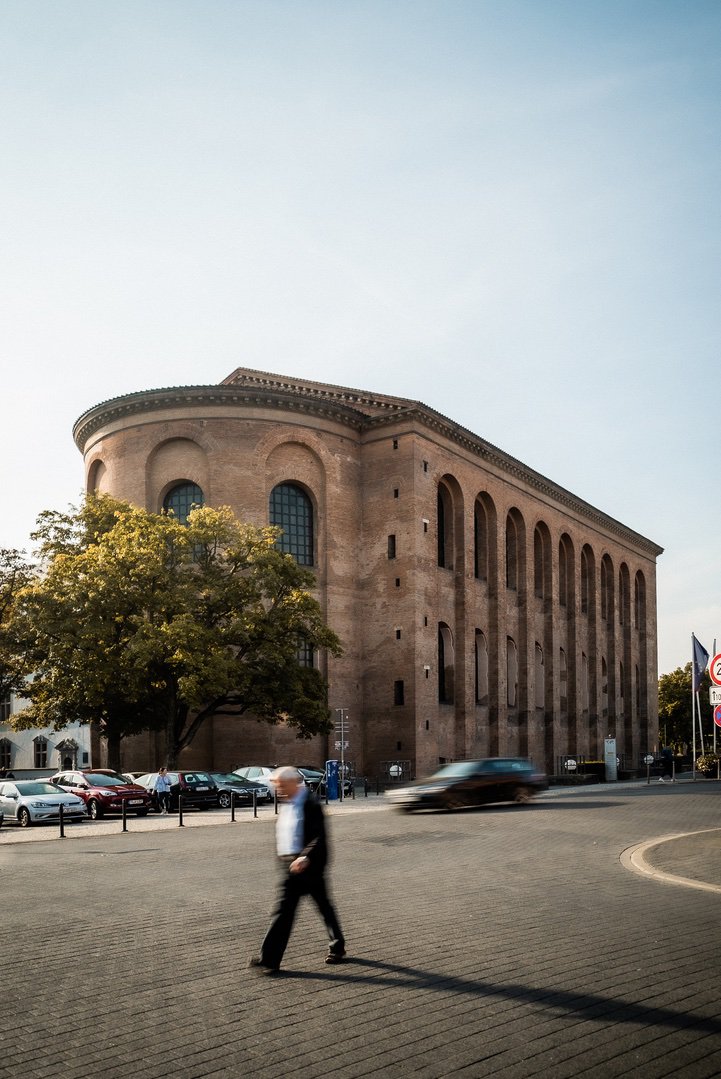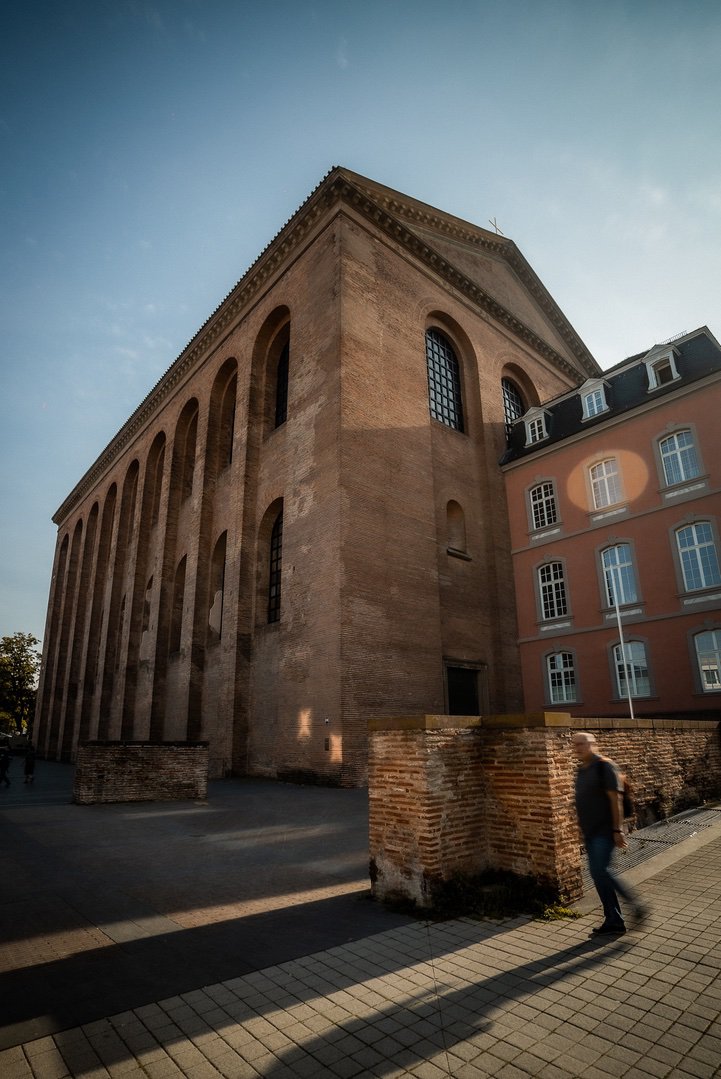Constantine Basilica
The mighty structure of the so-called Constantine Basilica is the throne room, the Palastaula, from the 4th century. After the Romans abandoned Trier, the building partly fell into disrepair, but in the Middle Ages the archbishops set up a castle in the very sturdy walls, some of which were over 3 m thick.
In 1096, the Crusader hordes attacked Trier. They went murdering and looting through the Rhineland, arrived in the city during Holy Week and encountered a latent anti-Semitic atmosphere. This was further inflamed by the fact that the people of Trier had experienced the Passion of Jesus once again with their processions in the days before Easter and that the Jews were also considered "Jesus murderers". There was quite a bit of chaos, and the archbishop tried to calm the situation by offering Jews refuge in his castle complex. In a Latin source, the building is referred to as "asylum Judeorum", i.e. a place of refuge for the Jews, and in a Hebrew source as "Palas". In the end, the archbishop himself had to flee, he then barricaded himself in the Porta Nigra, and there were fatalities, although not as many as in other cities such as Worms or Mainz.
The year 1096 was a watershed in that the pogrom was the first violent attack on the Jews in Trier, but the Jewish community recovered very quickly. A few years later they had regrouped and not only built new houses, but also a synagogue and a ritual bath. The Jews of Trier were spared physical attacks for the next 250 years, in contrast to other cities, until 1349, the year of the great plague, when people all over the German lands attacked the Jews because they were held responsible for the plague. After that, life for the Jews was never the same again. Most of the survivors fled to Poland. Those who stayed behind could only enter the city under strict conditions; there were strict limits on the number of people and the length of stay. In 1418, the Jews were then expelled from the entire archdiocese of Trier.
Author: Prof. Dr. Frank G. Hirschmann
Editorial staff: Prof. Dr. Frank G. Hirschmann
